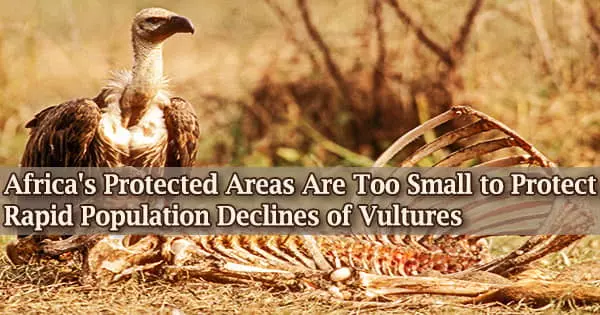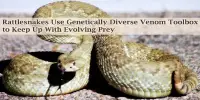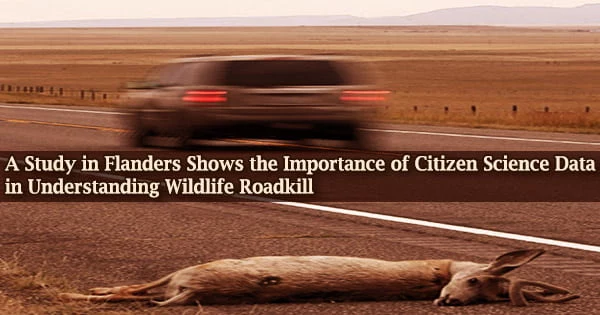Because they clean up the environment by eating carcasses, vultures help to prevent the spread of wildlife illnesses. The main cause of the vulture populations’ rapid decline, however, is purposeful and inadvertent poisoning.
In light of this, an international team of researchers carried out the continent of Africa’s first thorough comparative investigation of movement data of three species of imperiled Gyps vultures.
They discovered that individual home ranges can be up to 75,000 km2, far beyond the size of existing protected zones. Published in the journal “Biological Conservation” are these findings. It is obvious that greater “Vulture Safe Zones” must be created to protect vulture populations.
Through newly created tags outfitted with Artificial Intelligence (AI) and Internet of Things (IoT) communication technologies through satellite networks, a new initiative at the Leibniz Institute for Zoo- and Wildlife Research (Leibniz-IZW) seeks to increase scientific evidence for vulture conservation.
The African White-backed Vulture (Gyps africanus), the Rüppell’s Vulture (Gyps rueppelli), both of which are listed by the IUCN as Critically Endangered, and the Cape Vulture (Gyps coprotheres), which is categorized as Vulnerable, are all compared for the first time in this research.
The researchers examined a sizable collection of telemetry data from individuals who were caught and tagged in 18 countries over a 15-year period (2004 to 2019) in two regions of eastern and southern Africa. They set these data in relation to information on species, age, breeding status, season, and region. They assessed whether the designated home ranges overlapped with the already-existing protected areas, which ranged widely from National Parks to game-controlled regions to local conservation areas.
“Our analysis shows that African Gyps vultures have some of the largest home ranges of any terrestrial, non-migratory species in the world, enabled by their energetically efficient soaring flight and required for their use of a dispersed and ephemeral food source: carrion,” say authors Corinne J. Kendall (North Carolina State University and North Carolina Zoo).
For instance, adult white-backed vultures’ typical home ranges in east and southern Africa, respectively, are roughly 24,000 and 31,500 km2, respectively. The average flight ranges of Cape Vultures and Rüppell’s Vultures are 36,000 km2 and 75,000 km2, respectively.
“We also see that immature birds cover significantly larger areas than adults,” adds Ortwin Aschenborn (University of Namibia and Leibniz-IZW). “For example, immature white-backed vultures in southern Africa have average home ranges of just shy of 100,000 km² with a maximum of almost 300,000 km² in one individual in our dataset.”
Adult birds require smaller ranges because they can more effectively compete for the limited food resources. Breeding birds are also restricted to a significantly narrower operational area. The researchers also discovered seasonal differences in home range sizes. For instance, Rüppell’s vultures in East Africa covered bigger regions during the months of the wet season, when there was a scarcity of food.
Vultures will inevitably spend a large amount of time soaring above unprotected sites given their movements. The annual average overlap between the home ranges of Cape vultures and protected areas was the least, at 34% for adults and only 16% for young birds.
While protected areas are a common and successful conservation tool for safeguarding various components of biodiversity, these findings show that their utility is limited for species with large individual home ranges or migrating species. Protected areas usually minimise land use conversion, habitat degradation, and the use of environmental toxins or pollutants such as pesticides or poisons targeting conflict species. Yet, vultures do not know these boundaries and evidence-based conservation action needs to address challenges outside these areas.
As a result, they are exposed to and use food sources related to humans from animal farms and meat processing facilities much more frequently. Additionally, it raises the chance of exposure to environmental contaminants such as agricultural pesticides and poisoned baits used to control carnivores, a practice still common in southern and eastern Africa.
“While protected areas are a common and successful conservation tool for safeguarding various components of biodiversity, these findings show that their utility is limited for species with large individual home ranges or migrating species,” conclude Aschenborn and lead author Adam Kane (University College Dublin).
“Protected areas usually minimize land-use conversion, habitat degradation, and the use of environmental toxins or pollutants such as pesticides or poisons targeting conflict species. Yet, vultures do not know these boundaries and evidence-based conservation action needs to address challenges outside these areas.”
Vultures are one of the bird species that are declining the quickest around the globe, even among vertebrates. Over the past three generations, populations of the three species included in these analyses are thought to have decreased by more than 90%. In the 2007 IUCN Red List, the African white-backed vulture’s conservation status was revised from “least concern” to “near threatened.”
The species’ status was subsequently “upgraded” to “endangered” only five years later, and in October 2015, it was amended to “critically endangered” since the continued decrease was more severe than had been anticipated.
To lessen the influx of environmental contaminants like diclofenac, a non-steroidal anti-inflammatory medicine, “Vulture Safe Zones” (VSZ) have been established in unprotected areas of Southeast Asia. Due to the unintended nature of this sort of poisoning, VSZ have shown to be a successful technique for vulture conservation in areas or places where diclofenac bans across wide areas are practicable.
Like other long-lived species at the top of their food chains, vultures are susceptible to ingesting toxins from their diet because, like other birds of prey, they are long-lived animals.
“For VSZ to be successful in an African context, it requires vast areas to be nearly poison-free,” says Aschenborn. “The sizes of such areas need to be much larger than Etosha National Park (~23,000km2) in Namibia, for example. If we consider the average range of an immature Rüppell’s vulture of about 175,000 km², we can clearly see the challenges associated with this concept.”
Vulture restaurants with supplemental feeding at key places may be an additional strategy for conservation to lower the danger of poisoning during periods of restricted food availability, such as during wet seasons.
“Our findings show how important it is for international collaboration to protect wide-ranging species such as vultures,” Adam Kane says. “It is challenging but can foster meaningful research and conservation projects by unifying people to a collective purpose.”
Ortwin Aschenborn has been working on a brand-new, expansive research project at the Leibniz-IZW that intends to strengthen the body of evidence supporting the conservation of vultures since the beginning of 2022.
The two research subprojects “GAIA-Sat-IoT” and “SyNaKI” will create a new generation of tags for vulture study as part of the initiative. The tags will combine sensors (such as GPS positions and acceleration data) with an on-board camera and artificial intelligence algorithms that interpret information and photos of people’s movements and behaviors to help with automatic behavior classification.
This enables a real-time uplink to a satellite network created especially for the aim of viewing and analyzing the vulture world from their very own point of view.
The subprojects will also provide distributed, AI-based data analytics using different tags on lions and vultures to understand the movements and behaviors of bird flocks as well as carnivore and scavenger groups.
“The high-tech approach will facilitate new insights into the behavior of individuals and the dynamics of their ecosystem,” says Dr. Jörg Melzheimer, head of the project at the Leibniz-IZW. “We will not only better understand vultures and how they tackle the challenges to survival and reproduction, we will also learn about it faster. The intention of our project is to link human, animal, and artificial intelligence for watching the ecosystem in real-time, for example detecting disease outbreaks or hotspots of poisoning immediately.”
The German Space Agency (DLR), the Tierpark and Zoo Berlin, the Namibian Ministry of Environment, Forestry and Tourism, the Etosha Ecological Institute (EEI), and the Ongava Research Centre (ORC) collaborated with Leibniz-IZW to achieve this goal.
















